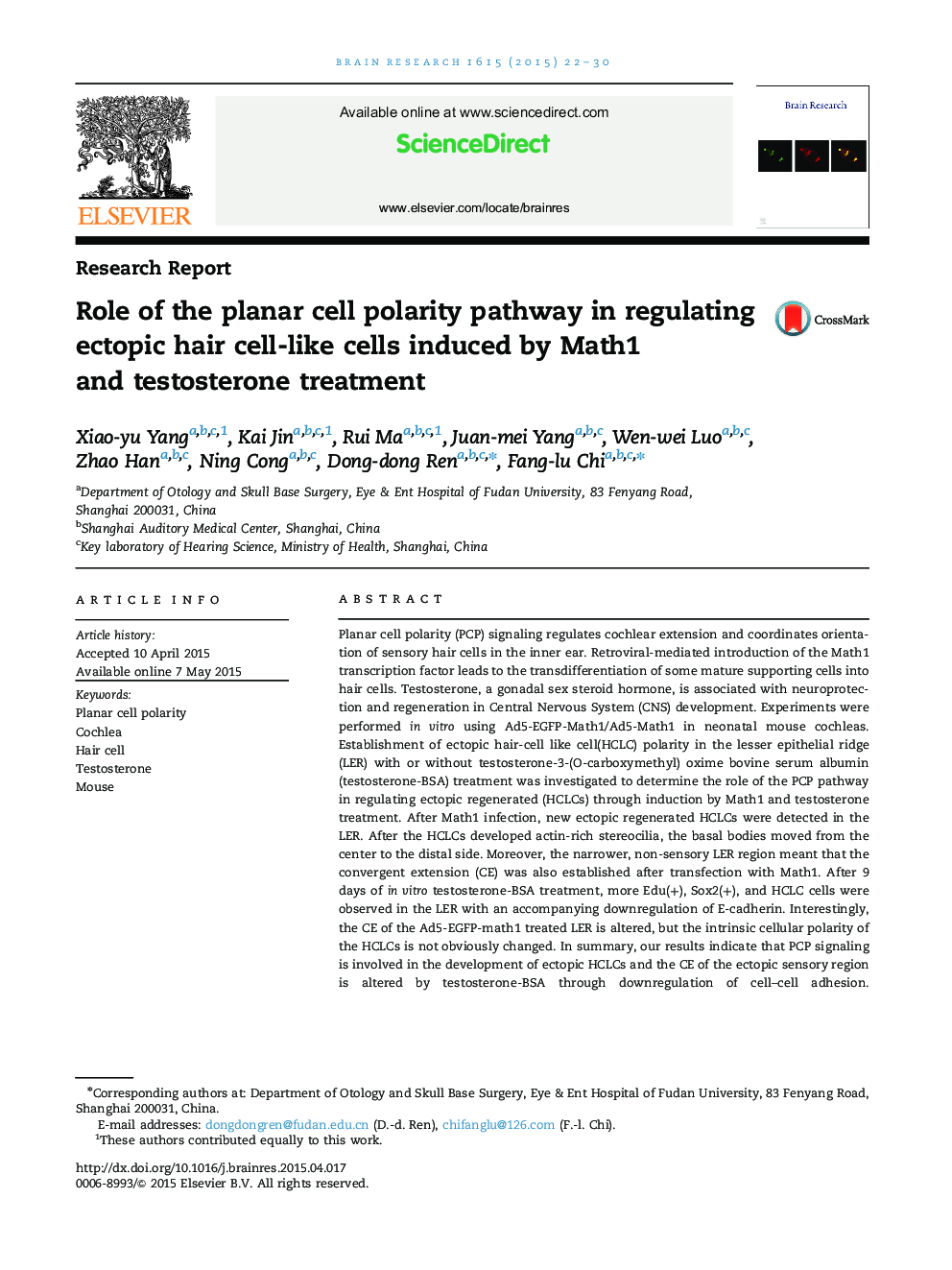| کد مقاله | کد نشریه | سال انتشار | مقاله انگلیسی | نسخه تمام متن |
|---|---|---|---|---|
| 4323777 | 1613824 | 2015 | 9 صفحه PDF | دانلود رایگان |

• Planar cell polarity is established in ectopic HCLCs by Math1 over-expression.
• With T-BSA treatment and Math1 over-expression, more regenerated HCLCs occur in LER.
• T-BSA affects CE of the ectopic sensory region through down-regulation of the cell–cell adhesion.
Planar cell polarity (PCP) signaling regulates cochlear extension and coordinates orientation of sensory hair cells in the inner ear. Retroviral-mediated introduction of the Math1 transcription factor leads to the transdifferentiation of some mature supporting cells into hair cells. Testosterone, a gonadal sex steroid hormone, is associated with neuroprotection and regeneration in Central Nervous System (CNS) development. Experiments were performed in vitro using Ad5-EGFP-Math1/Ad5-Math1 in neonatal mouse cochleas. Establishment of ectopic hair-cell like cell(HCLC) polarity in the lesser epithelial ridge (LER) with or without testosterone-3-(O-carboxymethyl) oxime bovine serum albumin (testosterone-BSA) treatment was investigated to determine the role of the PCP pathway in regulating ectopic regenerated (HCLCs) through induction by Math1 and testosterone treatment. After Math1 infection, new ectopic regenerated HCLCs were detected in the LER. After the HCLCs developed actin-rich stereocilia, the basal bodies moved from the center to the distal side. Moreover, the narrower, non-sensory LER region meant that the convergent extension (CE) was also established after transfection with Math1. After 9 days of in vitro testosterone-BSA treatment, more Edu(+), Sox2(+), and HCLC cells were observed in the LER with an accompanying downregulation of E-cadherin. Interestingly, the CE of the Ad5-EGFP-math1 treated LER is altered, but the intrinsic cellular polarity of the HCLCs is not obviously changed. In summary, our results indicate that PCP signaling is involved in the development of ectopic HCLCs and the CE of the ectopic sensory region is altered by testosterone-BSA through downregulation of cell–cell adhesion. Testosterone-BSA and Math1 treatment could promote an increase in HCLCs in the LER through proliferation and transdifferentiation.
Journal: Brain Research - Volume 1615, 30 July 2015, Pages 22–30